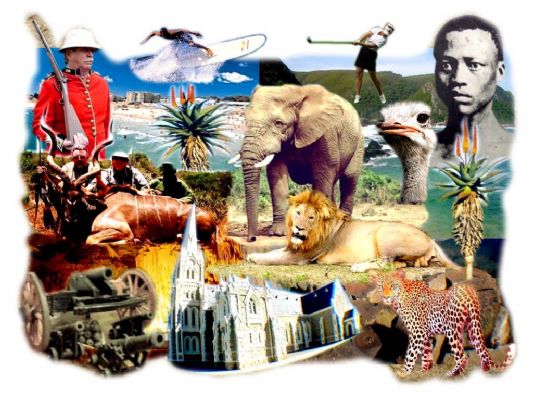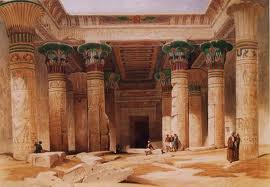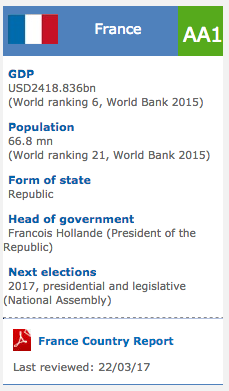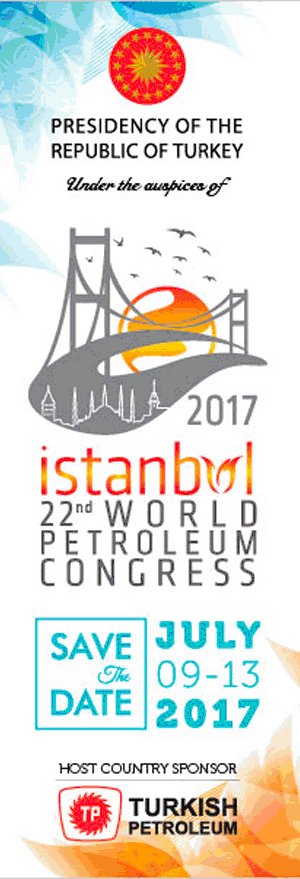Africa: Architecture & literature Report in Africa
2012/08/09

The architecture of Africa, like other aspects of the culture of Africa, is exceptionally diverse. Many ethno-linguistic groups throughout the history of Africa have had their own architectural traditions. In some cases, broader styles can be identified, such as the Sahelian architecture of an area of West Africa. One common theme throughout traditional African architecture is the use of mathematical fractals.
As with most architectural traditions elsewhere, African architecture has been subject to numerous external influences from the earliest periods for which evidence is available. Western architecture has also had an impact on coastal areas since the late 15th century, and is now an important source for many larger buildings, particularly in major cities.
Early architecture
Probably the most famous class of structures in all Africa, the pyramids of Egypt remain one of the world's greatest early architectural achievements, if limited in practical scope and originating from a purely funerary context. Egyptian architectural traditions also saw the rise of vast temple complexes and buildings.
In Nubia we have the Steo carved out of Rocks. By the Meroitic period, houses were of two rooms, forming large complexes. Notable buildings include the Meroitic Western Palace of Faras, built of sun-dried brick.
Little is known of ancient architecture south and west of the Sahara. Harder to date are the monoliths around the Cross River, which has geometric or human designs. The vast number of Senegambian stone circles also evidence an emerging architecture.
Egypt
Egypt's achievements in architecture were varied from temples, enclosed cities, canals, and dams.
Nubia
 When the Assyrians invaded Egypt, in 671 BC, Kush, as the kingdom was known, became an independent state until 591 BC when the Egyptians under Psamtik II invaded Kush and sacked and burned Napata. Little is left today of the original city, but excavations have brought to light some thirteen temples and three palaces.
When the Assyrians invaded Egypt, in 671 BC, Kush, as the kingdom was known, became an independent state until 591 BC when the Egyptians under Psamtik II invaded Kush and sacked and burned Napata. Little is left today of the original city, but excavations have brought to light some thirteen temples and three palaces.
In 350 BCE, partially in response to Egyptian pressure, the kingdom’s capital was moved to further south to Meroë, and the city became an important iron producing center. Around 300 BC, the monarchs began to be buried there. The city - on the east bank of the Nile about 6 km northeast of the Kabushiya station near Shendi, Sudan, ca. 200 km north-east of Khartoum - is marked by over two hundred pyramids of different sizes in three groups. The pyramids were built of sandstone, and ranged from 10 to 30 m in height. Around AD 350 the area was invaded by the Ethiopian kingdom of Aksum and the kingdom collapsed.
Aksumite
The best known building of the period in the region is the ruined or eight century BC multi-story tower at Yeha in Ethiopia, believed to have been the capital of D'mt. Ashlar masonry was especially dominant during this period, owing to South Arabian influence where the style was extremely common for monumental structures.
Aksumite Architecture flourished in the region from the 4th century BC onward, persisting even after the transition of the Aksumite dynasty to the Zagwe in the 12th century, as attested by the numerous Aksumite influences in and around the medieval churches of Lalibela. Stelae (hawilts) and later entire churches were carved out of single blocks of rock, emulated later at Lalibela and throughout Tigray. Other monumental structures include massive underground tombs often located beneath stelae. The stelae is the single largest monolithic structure ever erected (or attempted to be erected). Other well-known structures employing the use of monoliths include tombs such as the "Tomb of the False Door" and the tombs of Kaleb and Gebre Mesqel in Axum.
Most structures, however, like palaces, villas, commoner's houses, and other churches and monasteries, were built of alternating layers of stone and wood. The protruding wooden support beams in these structures have been named "monkey heads" and are a staple of Aksumite architecture and a mark of Aksumite influence in later structures. Some examples of this style had whitewashed exteriors and/or interiors, such as the medieval 12th century monastery of Yemrehanna Krestos near Lalibela, built during the Zagwe dynasty in Aksumite style. Contemporary houses were one-room stone structures or two-storey square houses or roundhouses of sandstone with basalt foundations. Villas were generally two to four stories tall and built on sprawling rectangular plans (cf. Dungur ruins). A good example of still-standing Aksumite architecture is the monastery of Debre Damo from the 6th century.
Berber
Thousands of tombs were left by Berbers that were pre-Christian in origin and whose architecture was unique to north-west Africa. The most famous was Tomb of the Christian Woman in Western Algeria. This structure contains column domed and spiraling pathways that lead to a single chamber.
Tichitt Walata (Old Ghana)
The oldest surviving archaeological settlements in West Africa and the oldest all stone base settlement south of the Sahara. It is thought to have been built by Soninke people and is thought to be the precursor of the Ghana empire. It was being settled around 2000 B.C. One finds well laid out streets and fortified compounds all made out of skilled stone masonry. In all, there were 400 settlements.
Medieval Architecture
North Africa
The Islamic conquest of North Africa saw Islamic architecture develop in the region, including such famous structures as the Cairo Citadel.
West Africa
West African Architecture can be broken into the Sahel zone and forest zone.
Islamic merchants played a vital role in the Western Sahel region since the Kingdom of Ghana.
 Kanem-Bornu's capital city Birni N'Gazargamu, may have have had a population of 200,000. It had four mosque which could hold up to 12,000 worshippers. It was surrounded by a 25 foot wall and more than 1 mile in circumference. Many large streets extended from the esplanade and connected to 660 roads. The main building and structure were built with red brick. Other buildings were built with straw and adobe.
Kanem-Bornu's capital city Birni N'Gazargamu, may have have had a population of 200,000. It had four mosque which could hold up to 12,000 worshippers. It was surrounded by a 25 foot wall and more than 1 mile in circumference. Many large streets extended from the esplanade and connected to 660 roads. The main building and structure were built with red brick. Other buildings were built with straw and adobe.
Six important Hausa city states existed Kano, Katsina, Daura, Gobir, Zazzau, and Biram. Kano was the most important.The city was surrounded by a wall of reinforced ramparts of stone and bricks. Kano contained a citadel near which the royal class resided. Individual residence was separated by "earthen" wall. The higher the status of the resident the more elaborate the wall. The entranceway was mazelike to seclude women. Inside near the entrance were the abode of unmarried women. Furtherdown down were slave quarters.
At Kumbi Saleh, locals lived in domed-shaped dwellings in the king's section of the city, surrounded by a great enclosure. Traders lived in stone houses in a section which possessed 12 beautiful mosques (as described by al-bakri), one centered on Friday prayer. The king is said to have owned several mansions, one of which was sixty-six feet long, forty-two feet wide, contained seven rooms, was two stories high, and had a staircase; with the walls and chambers filled with sculpture and painting. Sahelian architecture initially grew from the two cities of Djenné and Timbuktu. The Sankore Mosque in Timbuktu, constructed from mud on timber, was similar in style to the Great Mosque of Djenné. The rise of kingdoms in the West African coastal region produced architecture which drew on indigenous traditions, utilizing wood. The famed Benin City, destroyed by the Punitive Expedition, was a large complex of homes in coursed mud, with hipped roofs of shingles or palm leaves. The Palace had a sequence of ceremonial rooms, and was decorated with brass plaques
Ashanti architecture is perhaps best known from the reconstruction at Kumasi. Its key features are courtyard-based buildings, and walls with striking reliefs in mud plaster brightly painted. An example of a shrine can be seen at Bawjwiasi in Ghana. Four rectangular rooms, constructed from wattle and daub, lie around a courtyard. Animal designs mark the walls, and palm leaves cut to tiered shape provide the roof. The Yoruba surrounded their settlements with massive mud walls. Their buildings had a similar plan to the Ashanti shrines, but with verandahs around the court. The walls were of puddled mud and palm oil. The largest Wall edifice in Africa is Sungbo's Eredo. It comprises of sprawling mud walls and valley's that surrounded the town of Ijebu-Ode in Ogun state. Sungbo's Eredo is the largest monument in Africa, larger than the Great Pyramid or Great Zimbabwe.
East Africa
Nubia (Christian and Islamic)
Swahili States
Farther south, increased trade (namely with Arab merchants) and the development of ports saw the birth of Swahili architecture. Developed from an outgrowth of indigenous Bantu settlements[4], one of the earliest examples is the Palace of Husuni Kubwa lying west of Kilwa, built about 1245. As with many other early Swahili buildings, coral was the main construction material, and even the roof was constructed by attaching coral to timbers. Contrastingly, the palace at Kilwa was a two-story tower, in a walled enclosure. Other notable structures from the period include the pillar tombs as Malindi and Mnarani in Kenya, and elsewhere, originally built from coral but later from stone. Later examples include Zanzibar's Stone Town, with its famous carved doors, and the Great Mosque of Kilwa.
Aksumite
Throughout the medieval period, Aksumite architecture and influences and its monolithic tradition persisted, with its influence strongest in the early medieval (Late Aksumite) and Zagwe periods (when the churches of Lalibela were carved). Throughout the medieval period, and especially during the 10th-12th centuries, churches were hewn out of rock throughout Ethiopia, especially during the northernmost region of Tigray, which was the heart of the Aksumite Empire. However, rock-hewn churches have been found as far south as Adadi Maryam (15th c.), about 100km south of Addis Abeba. The most famous example of Ethiopian rock-hewn architecture are the 11 monolithic churches of Lalibela, carved out of the red volcanic tuff found around the town. Though later medieval hagiographies attribute all 11 structures to the eponymous king Lalibela (the town was called Roha and Adefa before his reign), new evidence indicates that they may have been built separately over a period of a few centuries, with only a few of the more recent churches having been built under his reign. Archaeologist and Ethiopisant David Phillipson postulates, for instance, that Bete Gebriel-Rufa'el was actually built in the very early medieval period, some time between 600 and 800 A.D., originally as a fortress but was later turned into a church.
Central Africa
Mbanza Congo was the capital of the Kingdom of Kongo with a population of 30,000 plus. It sat on a cliff with river below and forested valley. The King's dwelling was describe as a mile and half enclosure with walled pathways, courtyard, gardens, decorated huts, and palisades. One early explorer described it in terms of a Cretan labyrinth.
The Eastern Lunda dwelling of the Kacembe(king) was describe as containing fenced roads, a mile long. The enclosed walls were made of grass, 12 to 13 span in height. The enclosed roads lead to a rectangular hut openned on the west side. In the center was a wooden base with a statue on top about 3 span.
Burundi never had a fix capital. The closest thing was a royal hill, when the king moved, the location became the capital called the insago. The compound itself was enclosed inside a high fence. The compount had two entrance. One was for herders and herds. The other was to the royal palace. This palace was surrounded by a fence. The royal palace had three royal courtyard. Each serve a particular function one for herders, a sanctuary, kitchen and granary.
Nyanza was a royal capital of Rwanda. The king's residence the Ibwame was built on a hill. The surrounding hills were occupied by permanent or temporary dwellings. These dwellings were round huts surrounded by big yards and high hedge to separate compounds. The Rugo the royal compund was made of circular reed fence around thatched houses. The houses were carpeted with mats and had a clay hearth in the center for the king, his wife, and entourage. The royal house was close to 200-100 yards. It looked like a huge maze of connected huts and granaries. It had one entrance that lead to a large public square called the karubanda.
The capital of the Kuba Kingdom was surrounded by a 40 inch high fence. Inside the fence were roads, a walled royal palace, urban buildings. The palace was rectangular and in the center of the city.
The capital(kibuga)of the Buganda constantly change from hill to hill a description of the Kibuga of Buganda at Mengo Hills. The capital was divided into quarters corresponding to provinces. Each chief built a dwelling corresponding to provinces. Each chief built a dwelling for wife, slaves, dependents, and visitors. The city was a mile and half wide. Large plots of land was available for planting bananas and fruits. Roads were wide and well maintained.
The Marave people built bridges called Uraro due to changing river depth. These bridges were made out of bamboo. Bamboos were placed parallel to each other and tied together by bark(maruze). One end of the bridge would be tied to an existing tree. The bridge would curve downward 80 spans when entering. A bamboo on top would serve as a balustrade.
Southern Africa
Great Zimbabwe is the largest medieval city in sub-Saharan Africa. Great Zimbabwe was constructed and expanded for more than 300 years in a local style that eschewed rectilinearity for flowing curves. Neither the first nor the last of some 300 similar complexes located on the Zimbabwean plateau, Great Zimbabwe is set apart by the terrific scale of its structure. Its most formidable edifice, commonly referred to as the Great Enclosure, has dressed stone walls as high as 36 feet extending approximately 820 feet, making it the largest ancient structure south of the Sahara Desert. Houses within the enclosure were circular and constructed of wattle and daub, with conical thatched roofs.
Modern architecture
During the early modern period, the absorption of new diverse influences such as Baroque, Arab, Turkish and Gujarati Indian style began with the arrival of Portuguese Jesuit missionaries in the 16th and 17th centuries. Portuguese soldiers had initially come in the mid-16th century as allies to aid Ethiopia in its fight against Adal, and later Jesuits came hoping to convert the country. Some Turkish influence may have entered the country during the late 16th century during its war with the Ottoman Empire (see Habesh), which resulted in an increased building of fortresses and castles. Ethiopia, naturally easily defensible because of its numerous ambas or flat-topped mountains and rugged terrain, yielded little tactical use from the structures in contrast to their advantages in the flat terrain of Europe and other areas, and so had until this point little developed the tradition. Castles were built especially beginning with the reign of Sarsa Dengel around the Lake Tana region, and subsequent Emperors maintained the tradition, eventually resulting in the creation of the Fasil Ghebbi (royal enclosure of castles) in the newly-founded capital (1635), Gondar. Emperor Susenyos (r.1606-1632) converted to Catholicism in 1622 and attempted to make it the state religion, declaring it as such from 1624 until his abdication; during this time, he employed Arab, Gujarati (brought by the Jesuits), and Jesuit masons and their styles, as well as local masons, some of whom were Beta Israel. With the reign of his son Fasilides, most of these foreigners were expelled, although some of their architectural styles were absorbed into the prevailing Ethiopian architectural style. This style of the Gondarine dynasty would persist throughout the 17th-18th centuries especially and also influenced modern 19th century styles and later.
Early European colonies developed around the West African coast, building large forts, as can be seen at Elmina Castle, Cape Coast Castle, Christiansborg, Fort Jesus and elsewhere. These were usually plain, with little ornament, but showing more internal creativity at Dixcove Fort. Other embellishments were gradually accreted, with the style inspiring later buildings such as Lamu Fort and the Stone Palace of Kumasi.
By the late nineteenth century, most buildings reflected the fashionable European eclecticism and pastisched Mediterranean, or even Northern European, styles. Examples of colonial towns from this era survive at Saint-Louis, Senegal, Grand-Bassam and elsewhere. A few buildings were pre-fabricated in Europe and shipped over for erection. This European tradition continued well into the twentieth century with the construction of European-style manor houses, such as Shiwa Ng'andu in what is now Zambia, or the Boer homesteads in South Africa, and with many town buildings.
The revival of interest in traditional styles can be traced to Cairo in the early 19th century. This had spread to Algiers and Morocco by the early twentieth century, from which time colonial buildings across the continent began to pastiche elements of traditional African architecture, the Jamia Mosque in Nairobi being a typical example. In some cases, architects attempted to mix local and European styles, such as at Bagamoyo.
The impact of modern architecture began to be felt in the 1920s and 1930s. Le Corbusier designed several unbuilt schemes for Algeria, including ones for Nemours and for the reconstruction of Algiers. Elsewhere, Steffen Ahrens was active in South Africa, and Ernst May in Nairobi and Mombasa.
The Italian futurists saw Asmara as an opportunity to build their designs. Planned villages were constructed in Libya and Italian East Africa, including the new town of Tripoli, all utilising modern designs.
After 1945, Maxwell Fry and Jane Drew extended their work on British schools into Ghana, and also designed the University of Ibadan. The reconstruction of Algiers offered more opportunities, with Algiers Cathedral, and universities by Oscar Niemeyer, Kenzo Tange, Zwiefel and Skidmore, Owings and Merrill. But modern architecture in this sense largely remained the preserve of European architects until the 1960s, one notable exception being Le Groupe Transvaal in South Africa, who built homes inspired by Walter Gropius and Le Corbusier.
A number of new cities were built following the end of colonialism, while others were greatly expanded. Perhaps the best known example is that of Abidjan, where the majority of buildings were still designed by high-profile non-African architects. In Yamoussoukro, the Basilica of Our Lady of Peace of Yamoussoukro is an example of a desire for monumentality in these new cities, but Arch 22 in the old Gambian capital of Banjul displays the same bravado.
Experimental designs have also appeared, most notably the Eastgate Centre, Harare in Zimbabwe. With an advanced form of natural air-conditioning, this building was designed to respond precisely to Harare's climate and needs, rather than import less suitable designs. Neo-vernacular architecture continues, for instance with the Great Mosque of Nioro or New Gourna.
Other notable structures of recent years have been some of the world's largest dams. The Aswan High Dam and Akosombo Dam hold back the world's largest reservoirs. In recent years, there has also been renewed bridge building in many nations, while the Trans-Gabon Railway is perhaps the last of the great railways to be constructed.
The Bibliotheca Alexandrina at Shatby, Egypt -- a large airy spacious regional public library, built overlooking the Mediterranean -- completed in 2001 and designed by Snøhetta, in association with Hamza Associates of Cairo, is a good example of a modern granite-cladding construction. A commemoration of the Library of Alexandria, once the largest library in the world but destroyed in antiquity, the new Library's architecture is ultramodern and very non-traditional.
African literature refers to the literature of and for the African peoples. As George Joseph notes on the first page of his chapter on African literature in Understanding Contemporary Africa, while the European perception of literature generally refers to written letters, the African concept includes oral literature.
As George Joseph continues, while European views of literature often stressed a separation of art and content, African awareness is inclusive:
"Literature" can also imply an artistic use of words for the sake of art alone. Without denying the important role of aesthetics in Africa, we should keep in mind that, traditionally, Africans do not radically separate art from teaching. Rather than write or sing for beauty in itself, African writers, taking their cue from oral literature, use beauty to help communicate important truths and information to society. Indeed, an object is considered beautiful because of the truths it reveals and the communities it helps to build.
Early written literatures
North Africa had an early literate indigenous civilization (Ancient Egypt) some of whose hieroglyphic writings survive. North Africans also contributed to writing in Phoenician, Greek and Latin. Phoenician material, from Carthage and other colonies on the continent, has been very largely lost. Encouraged by the royal patronage of the Ptolemaic rulers, scholars in Alexandria assembled the famous Library of Alexandria and Alexandrian writers contributed not insignificantly to the material housed in this institution. North Africans writing in Latin include Apuleius and Saint Augustine.
In Islamic times, North Africans, such as ibn Khaldun attained great distinction within Arabic literature.
Oral literature
Oral literature (or orature) may be in prose or verse. The prose is often mythological or historical and can include tales of the trickster character. Storytellers in Africa sometimes use call-and-response techniques to tell their stories. Poetry, often sung, includes: narrative epic, occupational verse, ritual verse, praise poems to rulers and other prominent people. Praise singers, bards sometimes known as "griots", tell their stories with music.Also recited, often sung, are: love songs, work songs, children's songs, along with epigrams, proverbs and riddles.
Precolonial literature
Examples of pre-colonial African literature include the Epic of Sundiata composed in medieval Mali, The older Epic of Dinga from the old Ghana Empire, and the Kebra Negast or book of kings from Ethiopia. One popular form of traditional African folktale is the "trickster" story, where a small animal uses its wits to survive encounters with larger creatures. Examples of animal tricksters include Anansi, a spider in the folklore of the Ashanti people of Ghana; Ijàpá, a tortoise in Yoruba folklore of Nigeria; and Sungura, a hare found in central and East African folklore.
Colonial African literature
The African works best known in the West from the period of colonization and the slave trade are primarily slave narratives, such as Olaudah Equiano's The Interesting Narrative of the Life of Olaudah Equiano (1789).
In the colonial period, Africans exposed to Western languages began to write in those tongues. In 1911, Joseph Ephraim Casely-Hayford (also known as Ekra-Agiman) of the Gold Coast (now Ghana) published what is probably the first African novel written in English, Ethiopia Unbound: Studies in Race Emancipation [6] Although the work moves between fiction and political advocacy, its publication and positive reviews in the Western press mark a watershed moment in African literature.
During this period, African plays began to emerge. Herbert Isaac Ernest Dhlomo of South Africa published the first English-language African play , The Girl Who Killed to Save: Nongqawuse the Liberator in 1935. In 1962, Ngugi wa Thiong'o of Kenya wrote the first East African drama, The Black Hermit, a cautionary tale about "tribalism" (racism between African tribes).
African literature in the late colonial period (between the end of World War I and independence) increasingly showed themes of liberation, independence, and (among Africans in French-controlled territories) négritude. One of the leaders of the négritude movement, the poet and eventual President of Senegal, Léopold Sédar Senghor, published the first anthology of French-language poetry written by Africans in 1948, Anthologie de la nouvelle poésie nègre et malgache de langue française (Anthology of the New Black and Malagasy Poetry in the French Language), featuring a preface by the French existentialist writer Jean-Paul Sartre.
Postcolonial African literature
With liberation and increased literacy since most African nations gained their independence in the 1950s and 1960s, African literature has grown dramatically in quantity and in recognition, with numerous African works appearing in Western academic curricula and on "best of" lists compiled at the end of the 20th century. African writers in this period wrote both in Western languages (notably English, French, and Portuguese) and in traditional African languages.
Ali A. Mazrui and others mention seven conflicts as themes: the clash between Africa's past and present, between tradition and modernity, between indigenous and foreign, between individualism and community, between socialism and capitalism, between development and self-reliance and between Africanity and humanity. [8] Other themes in this period include social problems such as corruption, the economic disparities in newly independent countries, and the rights and roles of women. Female writers are today far better represented in published African literature than they were prior to independence.
In 1986, Wole Soyinka became the first post-independence African writer to win the Nobel Prize in literature. Algerian-born Albert Camus had been awarded the 1957 prize.
Noma Award
The Noma Award, begun in 1980, is presented for the outstanding work of the year in African literature.
Major African novels
- * Chinua Achebe, Things Fall Apart (Nigeria)
- * Alan Paton, Cry, The Beloved Country (South Africa)
- * Gracy Ukala, Dizzy Angel (Nigeria)
- * Daniel Olorunfemi Fagunwa, Ogboju odẹ ninu igbo irunmalẹ (The Forest of a Thousand Demons) (Nigeria)
- * Mariama Bâ, Une si longue lettre (So Long a Letter) (Senegal)
- * Ousmane Sembène, Xala (Senegal)
- * Ngugi wa Thiong'o, A Grain of Wheat (Kenya)
- * Benjamin Sehene, Le Feu sous la Soutane (Fire under the Cassock) (Rwanda)
- * Thomas Mofolo, Chaka (South Africa/Lesotho)
- * Tsitsi Dangarembga, Nervous Conditions (Zimbabwe)
- * Dambudzo Marechera, The House of Hunger (Zimbabwe/Rhodesia)
- * Yvonne Vera, Butterfly Burning (Zimbabwe)
- * Mia Couto, Terra Sonâmbula (A Sleepwalking Land) (Mozambique)
- * Ayi Kwei Armah, The Beautyful Ones Are Not Yet Born (Ghana)
- * Ben Okri, The Famished Road (Nigeria)
- * J.M. Coetzee, Disgrace (South Africa)
Major African poets
- Chinua Achebe (Nigeria)
- Gracy Ukala (Nigeria)
- Wole Soyinka (Nigeria)
- Christopher Okigbo (Nigeria)
- Chidi Anthony Opara(Nigeria)
- Lenrie Peters (Gambia)
- Kofi Anyidoho (Ghana)
- Dennis Brutus (South Africa)
- Kofi Awoonor (Ghana)
Secondary literature
- Encyclopedia of African Literature, ed Simon Gikandi, London: Routledge, 2003.
- The Cambridge History of African and Caribbean Literature, ed Abiola Irele and Simon Gikandi, 2 vls, Cambridge [u.a.]: Cambridge University Press, 2004. Table of contents
- * Daughters of Africa: An International Anthology of Words and Writing by Women of African Descent", ed Margaret Busby (Random House, 1992).
-
General History of Africa vol. VIII, ed. Ali A. Mazrui, UNESCO, 1993, ch. 19 "The development of modern literature since 1935," Ali A. Mazrui et alUnderstanding Contemporary Africa, ed. April A. Gordon and Donald L. Gordon, Lynne Rienner, London, 1996, ch. 12 "African Literature", George Joseph
- Related Articles
-
Africa Transport Challenges and Constraints
2012/08/09 更多 Africa Transport Challenges and Constraints In spite of the efforts made by African governments and their development partners in formulating and implementing measures, polices, strategies and programmes to develop adequate, safe, secure and affordable transport system that supports efforts to eradicate poverty and bring about sustainable development, a wide gap still exists between planned targets and the level of achievement. This can be attributed to the numerous challenges and constraints that the region faces in relation to the development of sustainable transport systems. The major challenges and constraints include the following. -
Africa Progress Of Transport Sector
2012/08/09 更多 Africa Progress Of Transport Sector Transport and trade facilitation Transport safety and security In West Africa, the COSCAP Significant transport infrastructure development and services, including roads, railways, airports and seaports has taken place. To support efforts by individual countries, sub-regional, regional and international organizations, ministerial conferences and heads of state summits adopted decisions and resolutions with the view to accelerating the development of the transport system. -
Africa Capital Markets Profile
2012/08/09 更多 -
Actions Africa must take
2012/08/09 更多 -
Africa Energy Situation
2012/08/09 更多
-
- Africa News
-
- ABIDJAN: Microfinance lenders gaining ground in Côte d’Ivoire
- TUNISIA: Tunisia harvests growth in agriculture sector
- DJIBOUTI CITY: Djibouti’s tourism ambitions garner overseas support
- BOTSWANA: Tripartite Free Trade Area plods along slowly in Africa
- MAPUTO CITY: Shaken but not stirred: Mozambique's banks look forward with optimism
- NAMIBIA: Namibia, SA mourns anti-apartheid icon
- Trending Articles
-
- AFRICA: East Africa’s leading tourism fair kicks off
- INDONESIA: Seychelles promotes eco-culture tourism in Kutai Kartanegara, Indonesia
- BRUNEI : The next chapter for the Trans-Pacific Partnership
- BANGLADESH: Finance Minister On Power Sector In Budget Speech,Abul Maal Abdul Muhith
- ARGENTINA: ‘Tourism sector requires strong capital investments’
- ASIA: ASEAN, the region’s strategic convenor











